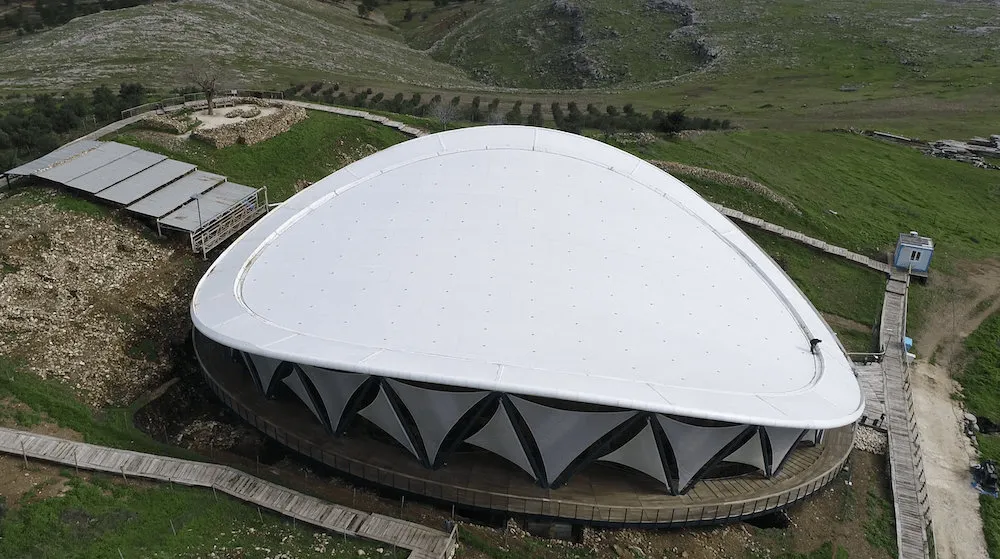
German archaeologist Klaus Schmidt arrives at a hilltop in southeastern Turkey in November 1994. Previous surveys dismissed the site as a medieval cemetery. Within hours, Schmidt recognizes what his predecessors missed. The most important archaeological site in human history.
For decades, the establishment ignores Göbekli Tepe. When forced to acknowledge its existence, reactions range from skepticism to outright denial. The site's implications are too devastating to accepted chronologies. The questions academic orthodoxy refuses to answer pile up.
How could hunter-gatherers organize the labor force needed to quarry, transport, and erect 50-ton pillars? How could pre-agricultural societies develop the architectural knowledge to create perfectly circular stone enclosures? The answer establishment science refuses to consider: they weren't hunter-gatherers.
Someone with advanced organizational capacity, astronomical knowledge, and construction technology built Göbekli Tepe. Then history forgot they existed. Schmidt himself rejects the simplistic temple interpretation. His research reveals intentional astronomical alignments, encoded calendrical systems, and evidence of ritualistic practices far more sophisticated than primitive worship.
Chemical engineer Martin Sweatman and Dimitrios Tsikritsis publish research in 2017 that sends shockwaves through the archaeological community. Their analysis of Pillar 43, the so-called Vulture Stone, reveals something academics missed for decades. The animal carvings aren't primitive art. They're star charts.
The scorpion represents Scorpius. The duck maps to Libra. The wolf aligns with Canis Minor. All positioned around a central circular symbol representing the sun. Using astronomical software, the researchers calculate when these constellations would have appeared in the exact configuration depicted on the pillar.
Three dates emerge. 4350 BCE, precisely when Sumerian civilization suddenly appears in the historical record. 18,000 BCE, deep in the last ice age. And 10,950 BCE, the exact date of the Younger Dryas impact event that triggered global catastrophe.
The headless human figure at the bottom isn't symbolic. It's literal. It depicts mass death. The meteor shower above represents the cosmic impact that ended their world. Göbekli Tepe wasn't built to worship gods. It was constructed to remember an apocalypse.
Modern scanning technology reveals what traditional archaeology missed. Göbekli Tepe connects via subterranean tunnels to a vast network of underground cities stretching across Turkey. Derinkuyu, Kaymaklı, Özkonak, all engineered for long-term survival in hostile conditions.
The official narrative claims Christians built these cities to hide from Roman persecution. The chronology crumbles under scientific scrutiny. Ground-penetrating radar shows construction techniques and tool marks dating thousands of years before Christianity existed. The ventilation systems alone require engineering knowledge supposedly unavailable to ancient peoples.
Recent excavations at Karahan Tepe, discovered in 2019, reveal an even larger complex than Göbekli Tepe. The pattern becomes clear. We're not looking at isolated monuments but components of a civilization-scale survival infrastructure. Someone prepared for catastrophe on a planetary scale.
Ice core samples from Greenland preserve the atmospheric record of the Younger Dryas period. The data shows temperature fluctuations so extreme they would be considered impossible if we didn't have physical evidence. Within decades, global temperatures dropped 15 degrees Celsius, then reversed with equal violence.
Geological surveys across North America reveal a debris field consistent with massive meteor impacts. The Carolina Bays, hundreds of thousands of elliptical craters, all point to a common origin point in the northern sky. Sediment layers show evidence of global wildfires, atmospheric electrical storms, and tsunami deposits hundreds of miles inland.
This wasn't gradual climate change. It was planetary near-extinction. The Göbekli Tepe builders didn't create their monument in peaceful times. They carved their warning in the immediate aftermath of watching their world end.
Why did mainstream archaeology take 30 years to acknowledge Göbekli Tepe's significance? Why do textbooks still claim civilization began with Sumer? Why does academic consensus refuse to consider pre-catastrophe advanced societies?
The answers point to an uncomfortable truth. Accepting Göbekli Tepe's implications requires rewriting everything we claim to know about human history. It demands acknowledgment that our species has repeatedly risen to advanced levels, only to be catastrophically reset by planetary disasters.
Recent excavations suggest we've uncovered less than 5% of the Göbekli Tepe complex. Ground-penetrating radar shows at least 20 additional stone circles buried beneath the surface. Each new discovery raises more questions than it answers.
NASA's Double Asteroid Redirection Test in 2023 successfully altered an asteroid's trajectory, the first demonstration of planetary defense technology. The project's urgency stems from a simple recognition: cosmic impacts aren't ancient history, they're ongoing threats.
The Chelyabinsk meteor of 2013. The Tunguska event of 1908. The countless near-misses detected monthly by sky surveys. All remind us that Göbekli Tepe's builders weren't paranoid. They were survivors documenting reality.
Perhaps the monument's greatest achievement isn't its age or scale, but its persistence. Against all odds, it waited 11,000 years for humanity to develop the tools to understand its message. The pillars stand as testament to a simple truth.
The apocalypse isn't coming. It's cyclical. And we're overdue.